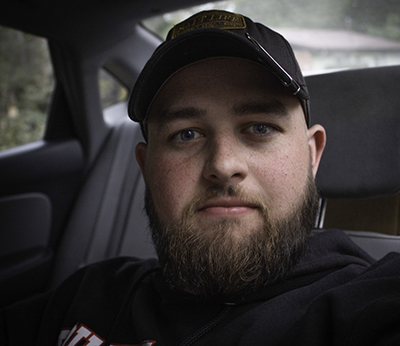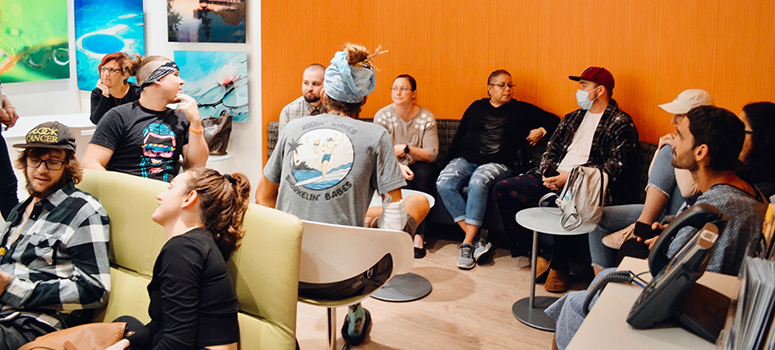Shedding Light on Adolescents and Young Adults with Cancer
Imagine being in your late teens, early ‘20s or ‘30s. Maybe you just started college or landed your first job. Perhaps you’re a newlywed with dreams of starting a family. And then you’re hit with the three words no one ever wants to hear, “you have cancer.”
Many adolescents and young adults between the ages of 15 and 39 are faced with this harsh reality every day.
According to the National Cancer Institute, approximately 70,000 adolescent and young adults are diagnosed with cancer each year in the United States. Cancer is the leading cause of disease related death among this age group.

Patient Timothy Capps was only 23 when diagnosed with Ewing Sarcoma.
For some like Timothy Capps, it was an isolating moment.
On Dec. 21, 2018, his 23rd birthday, Capps was diagnosed with Ewing sarcoma. He was a sophomore in college pursuing a bachelor’s degree in ministerial leadership at Southeastern University.
“I was a typical college student. I had no savings and was living in student housing provided by Christian Life Center as part of my internship,” said Capps. “A part time job allowed me to cover the costs of basic living expenses.”
Like many other young adults with cancer, financial constraints and food insecurities were very real problems for Capps.
“After my diagnosis, everything came to a screeching halt,” he explained. “I had to move back home to Lakeland to live with my mother. I was fortunate enough to have health insurance which covered a large portion of my medical bills.”
But everything else fell on Capps’s mother.
“I had no way to work or generate income to help with housing, food or transportation to and from my appointments at Moffitt. I had chemotherapy every other week for eight months, plus 35 days of radiation. Through it all, I felt like I was a massive financial burden on my mother,” Capps shared.
After the conclusion of his treatments, Capps’s scans came back clear and he re-enrolled in school. But just a few months later, his cancer returned, and he found himself back at his mom’s house and Moffitt undergoing a new chemotherapy treatment.
“For many young patients, like Timothy, a cancer diagnosis is often accompanied by financial toxicity not only for the patient but also their support system,” said Olivia Flail, MSW, an outpatient social worker at Moffitt. “As social workers, our role is to assist patients and their family in managing the complex impact cancer can have on their lives.”
Moffitt Cancer Center’s Adolescent and Young Adult (AYA) Program helps connect patients directly to the resources they may need with the help of nurse navigator Carole Greenslade.
“As a navigator, I do a lot of listening,” said Greenslade. “I let them vent and then help dissect their issues down into manageable pieces based on priority.”
AYA program coordinator Amber Skinner says, “it’s really a team effort to provide for the needs of AYA patients. If a patient is looking for peer-to-peer support or considering fertility preservation, we are all there to help steer them in the right direction.”

Patients gather in Moffitt's AYA Lounge during a previous event. The AYA Lounge is located on the fourth floor of the main hospital, near Elevator C.
Facing a relapse and additional treatment, Capps is facing another uphill battle and once again the financial burden has fallen on his mom.
“I can say with a full heart that I would not be able to continue if it was not for my amazing family and the many friends who pray for me,” said Capps. “Moffitt has been an extremely warm and welcoming place. I have met so many wonderful people through the AYA program. As horrible as my circumstances are, I can find so much to be grateful for in the people I have around me.”
Capps is scheduled for a new set of scans on April 16 and will begin a second round of chemotherapy.



